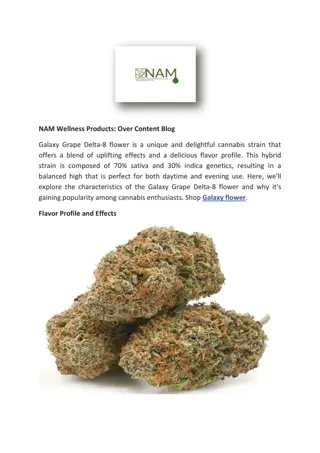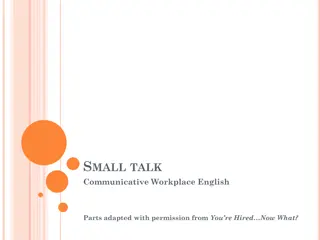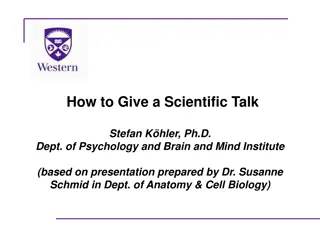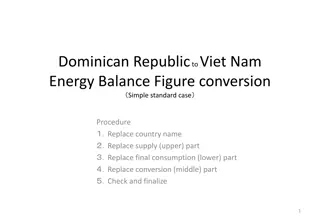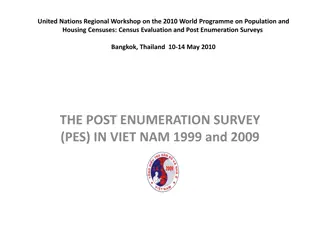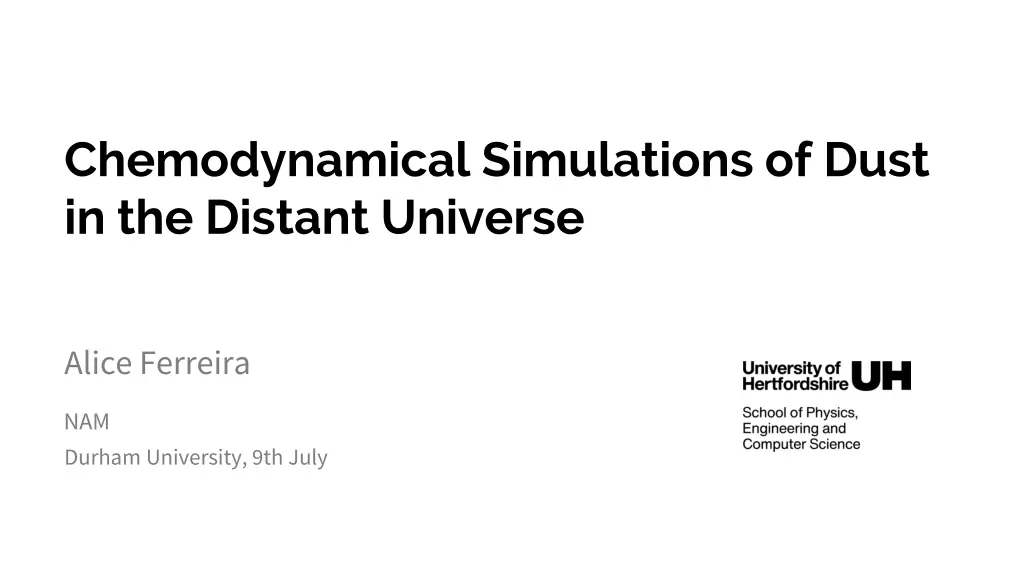
Dust Simulations in the Distant Universe
Explore the fascinating world of dust in the distant universe through chemodynamical simulations presented by Alice Ferreira from Durham University. Discover types of dust, dust production mechanisms in core-collapse supernovae and AGB stars, grain growth in the interstellar medium, and thermal sputtering processes. Dive into the simulation of dust on a cosmological scale and uncover insights into the complex dynamics of dust in the cosmos.
Download Presentation

Please find below an Image/Link to download the presentation.
The content on the website is provided AS IS for your information and personal use only. It may not be sold, licensed, or shared on other websites without obtaining consent from the author. If you encounter any issues during the download, it is possible that the publisher has removed the file from their server.
You are allowed to download the files provided on this website for personal or commercial use, subject to the condition that they are used lawfully. All files are the property of their respective owners.
The content on the website is provided AS IS for your information and personal use only. It may not be sold, licensed, or shared on other websites without obtaining consent from the author.
E N D
Presentation Transcript
Chemodynamical Simulations of Dust in the Distant Universe Alice Ferreira NAM Durham University, 9th July
Dust at high redshift Log(Mdust / Mstellar) F /F ,cont(2175 ) Redshift emit( ) Carniani+24 Wistok+23
Our simulation Kobayashi+20 Kobayashi+14
Types of dust we include Silicates Carbonaceous Other Forsterite - Mg2SiO4 Carbon - C Iron - Fe Fayalite - Fe2SiO4 Magnetite - Fe3O4 Enstatite - Mg2Si2O6 Corundum - Al2O3 Ferrosilite - Fe2Si2O6 Silicon Carbide - SiC Quartz - SiO2
Dust production in core-collapse supernovae Dust produced at solar metallicity (Z = 0.02) Dust produced at Z = 0 Mdust / M Mdust / M M* / M M* / M Yields from Bianchi+07
Dust production in AGB stars Dust produced at low metallicity (Z = 0.001) Dust produced at solar metallicity (Z = 0.02) log(Mdust / Msun) Mdust / M Mdust / M M* / Msun M* / M M* / Msun M* / M Yields from Zhukovska+08
Grain growth in the interstellar medium Dust Atomic metal
Thermal sputtering in the interstellar medium Dust Hot gas Atomic metal
Dust destruction by supernova shock waves Supernova Red supergiant Dust Atomic metal
Destruction by star formation Dust Star
Dust mass to stellar mass ratio in galaxies with decreasing redshift
Dust mass to stellar mass ratio in galaxies with decreasing redshift
Dust mass to stellar mass ratio in galaxies with decreasing redshift
Dust mass to stellar mass ratio in galaxies with decreasing redshift
Dust mass to stellar mass ratio in galaxies with decreasing redshift
Future work Chiaki+25
Summary Modelling dust is important to explain dust masses at high redshift and more accurately correct for dust in observations We include the processes of dust production by stars, grain growth, and destruction by thermal sputtering, supernova shock waves and star formation in the ISM in our cosmological simulations We have preliminarily compared our results with observations
Dust production in core-collapse supernovae Schneider+24
Dust mass survival after the reverse shock Bianchi+07




